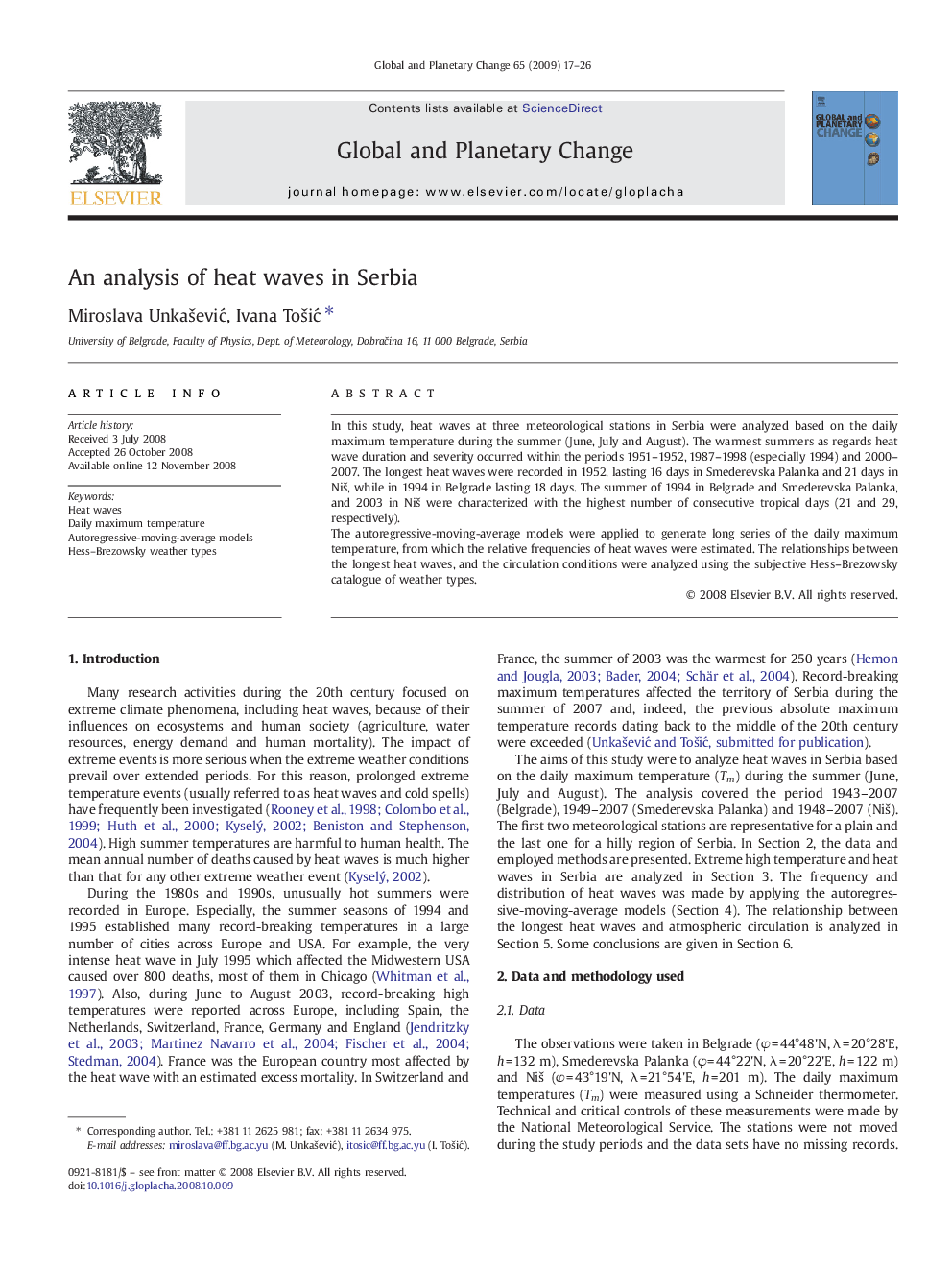| Article ID | Journal | Published Year | Pages | File Type |
|---|---|---|---|---|
| 4464107 | Global and Planetary Change | 2009 | 10 Pages |
In this study, heat waves at three meteorological stations in Serbia were analyzed based on the daily maximum temperature during the summer (June, July and August). The warmest summers as regards heat wave duration and severity occurred within the periods 1951–1952, 1987–1998 (especially 1994) and 2000–2007. The longest heat waves were recorded in 1952, lasting 16 days in Smederevska Palanka and 21 days in Niš, while in 1994 in Belgrade lasting 18 days. The summer of 1994 in Belgrade and Smederevska Palanka, and 2003 in Niš were characterized with the highest number of consecutive tropical days (21 and 29, respectively).The autoregressive-moving-average models were applied to generate long series of the daily maximum temperature, from which the relative frequencies of heat waves were estimated. The relationships between the longest heat waves, and the circulation conditions were analyzed using the subjective Hess–Brezowsky catalogue of weather types.
